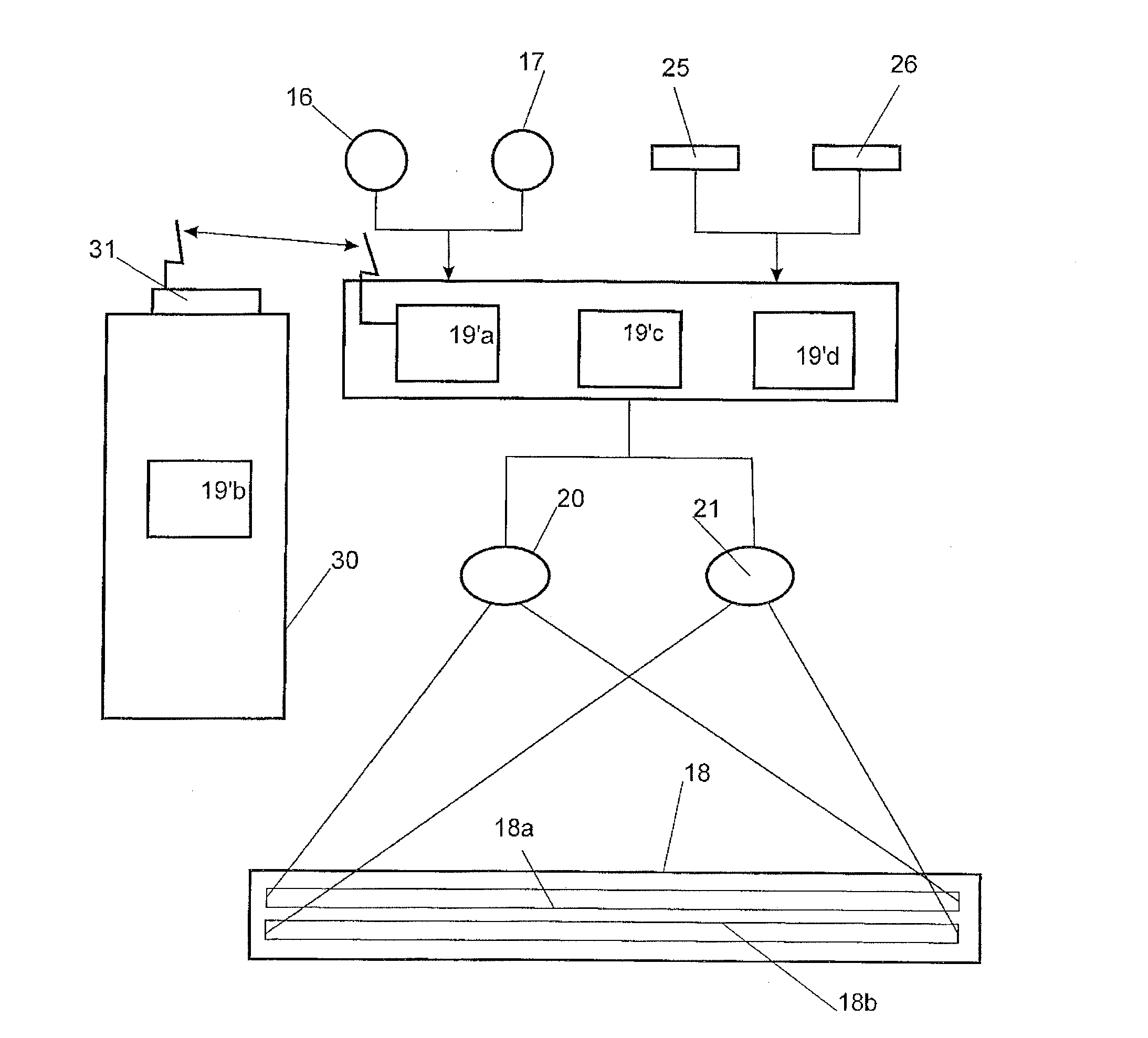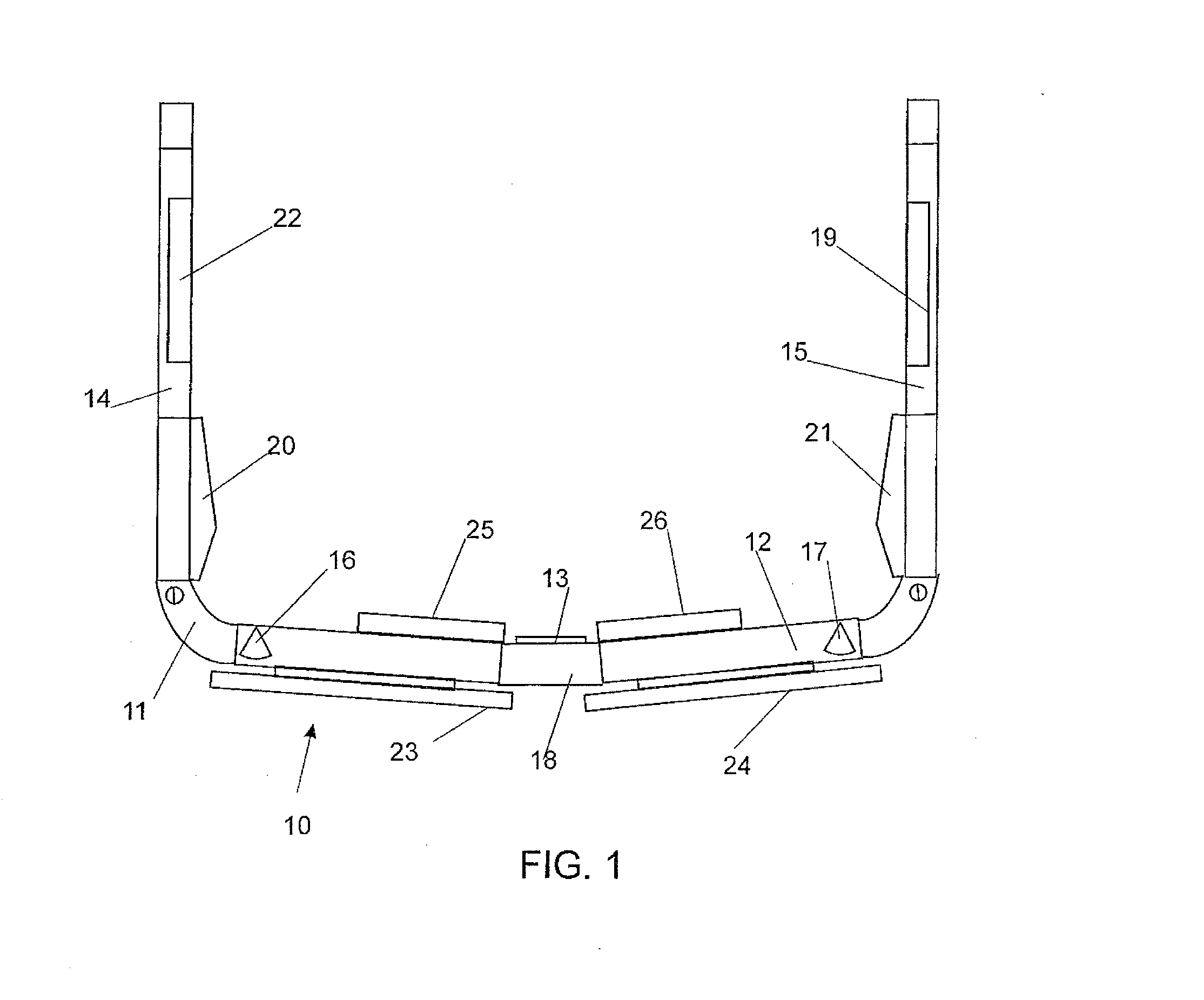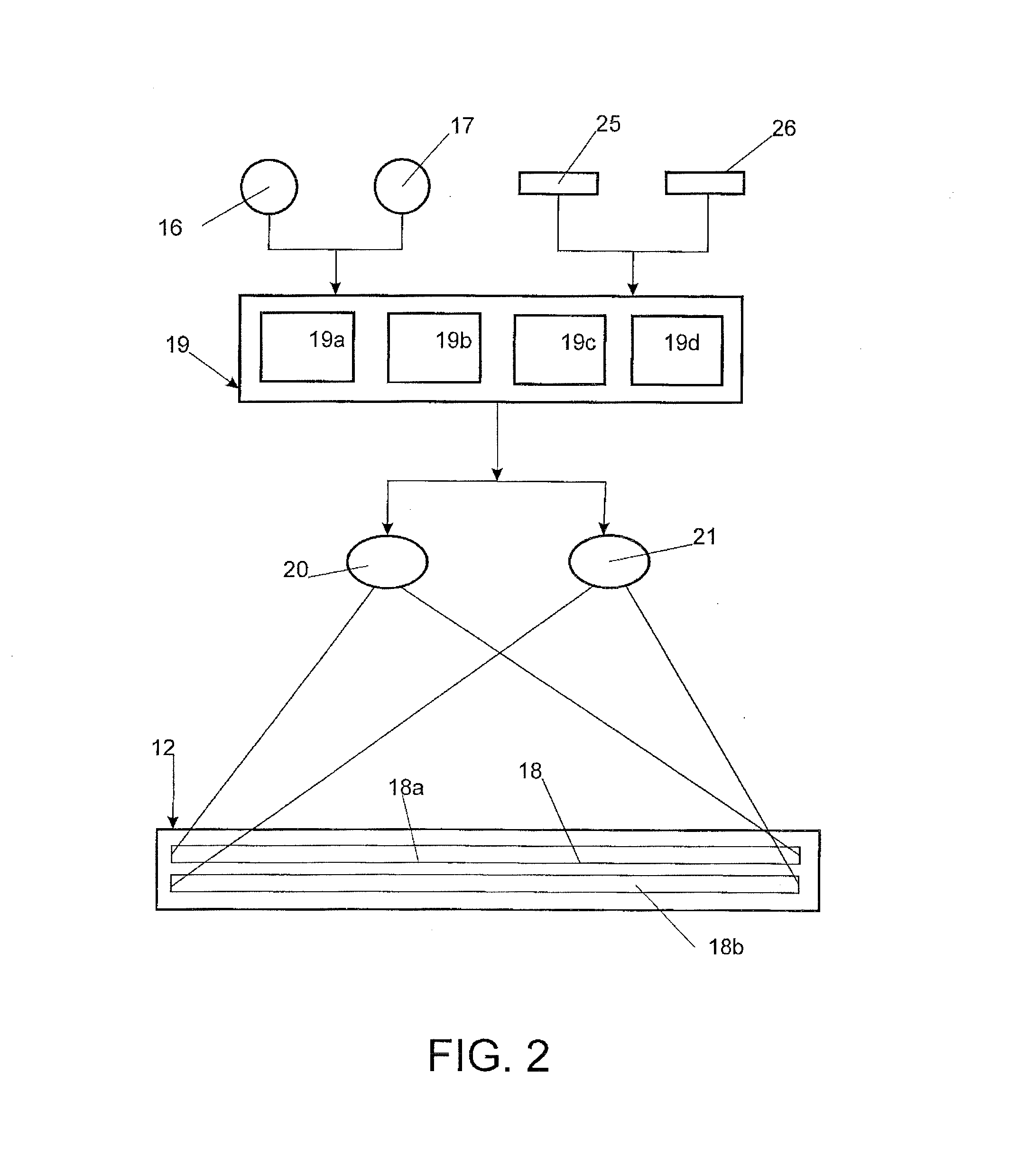Method and device for helping to understand an auditory sensory message by transforming it into a visual message
a visual message and sensory message technology, applied in the field of methods and devices for helping to understand auditory sensory messages, can solve the problems of reducing the sensitivity of the ear, not solving all problems, and impossible or uncertain comprehension of auditory sensory messages,
- Summary
- Abstract
- Description
- Claims
- Application Information
AI Technical Summary
Benefits of technology
Problems solved by technology
Method used
Image
Examples
first embodiment
[0042]FIG. 2 is a schematic view illustrating the main stages of the process of the invention and
second embodiment
[0043]FIG. 3 is a schematic view illustrating the main stages of the process of the invention according to a
BEST WAYS OF REALIZING THE INVENTION
[0044]The device according to the invention comprises several components that allow on the one hand to pick up a vocal information, to transcribe this vocal information into a visual information, on the other hand to display said visual information in the field of vision of an user, on his request, if necessary to scroll the visual information in the predetermined area of said field of vision. The information can be memorized, its display can be static, but preferably moving, and scrolling can be initiated instantaneously or with a lag defined previously, or even repeated, so that the user can access the information at any time when he considers this necessary, according to the level of comprehension of the communicated vocal information.
[0045]It is essential that the visual data is put at the disposal of the user in an efficient, quasi auto...
PUM
 Login to View More
Login to View More Abstract
Description
Claims
Application Information
 Login to View More
Login to View More - R&D
- Intellectual Property
- Life Sciences
- Materials
- Tech Scout
- Unparalleled Data Quality
- Higher Quality Content
- 60% Fewer Hallucinations
Browse by: Latest US Patents, China's latest patents, Technical Efficacy Thesaurus, Application Domain, Technology Topic, Popular Technical Reports.
© 2025 PatSnap. All rights reserved.Legal|Privacy policy|Modern Slavery Act Transparency Statement|Sitemap|About US| Contact US: help@patsnap.com



